11th March 2023
Amazingly our last visit to Two Tree Island was on the 4th February 2015 so time to see how things have changed. We arrived about four hours before high tide so started at the slipway with acres of mud either side. Just a few Oystercatchers, Redshanks and Curlews but all very distant, but on our way back we found two Knot reasonably close in. I can't recall ever seeing Knot here before.
Then on to the salt lagoon where lots of waders come into roost at high tide. The wooden hide here was burnt down by vandals in April 2019 and has now been replaced by a metal hopefully indestructable hide called Monty's Lookout after Anthony (Monty) Cooper, a volunteer at Two Tree Island whose legacy funded the hide.
Still a way to go to high tide so fairly quiet with just a handful of Redshank and Oystercatchers the only waders present, and Wigeon and Teal the only ducks.
Then small flocks of Dunlin and Ringed Plover started to arrive and the numbers began to swell. What was noticeable was that whereas on our previous vists most of the waders congregated at the far end of the lagoon, now there were more small islands right in front of the hide giving some much better views. The only waders that remained at the far end were the Redshanks which is why there are no photographs of them.
Other waders of note were a handul of Grey Plovers still in their winter plumage.
And then came the biggest surprise of all. Earlier in the day we had seen two flocks of 1000 each of Knot flying around the estuary and now 1000+ had flown in to the lagoon for thie roost. This was not only a surprise because of the sheer numbers but also because as I said earlier I hadn't seen a knot here before. It was also noticeable that there wasn't a single Black-tailed Godwit present whereas on previous visits they were by far the dominant wader.
But as we all know high tide roosts are not as well organised as this and there is a lot of activity as birds fly in, the whole roost gets spooked and all take to the air and jostle for position on their return, all of which provides some great opportunities for some flight shots starting with some Ringed Plovers and Dunlin.
And one of the Grey Plovers also flew in to show us its distinctive black arm pit.
Thereafter the shots were predominantly Knot but also some Ringed Plover and Dunlin.
How on earth can waders fly like this without colliding???
A few of the Knot were colour-ringed and Ed Keeble is kindly sending off the data. When I know where they were ringed I will post the results in a future blog.
What an amazing day!!!!!











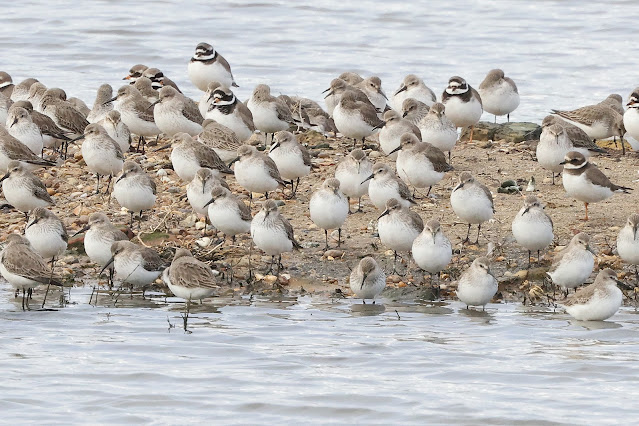





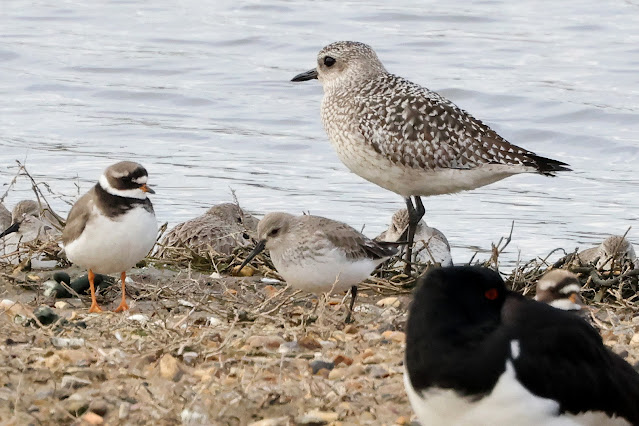




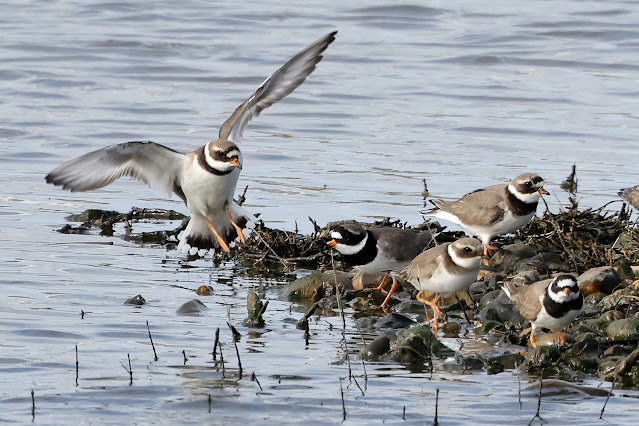

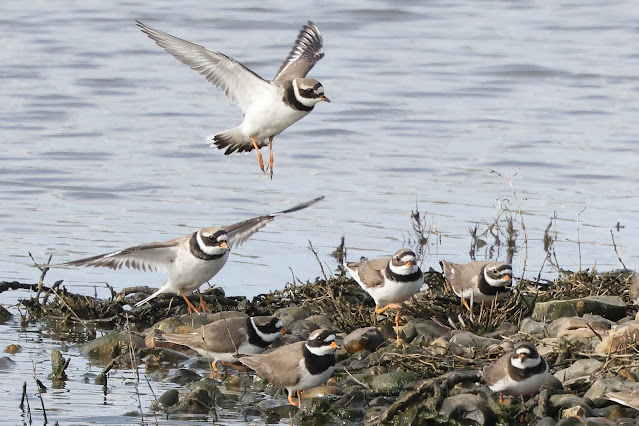



















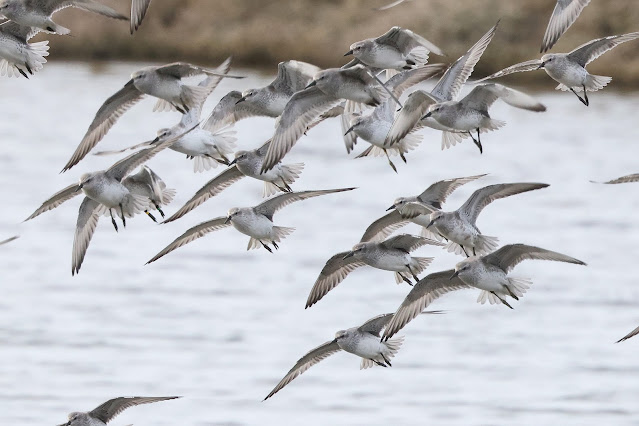




No comments:
Post a Comment
Note: only a member of this blog may post a comment.